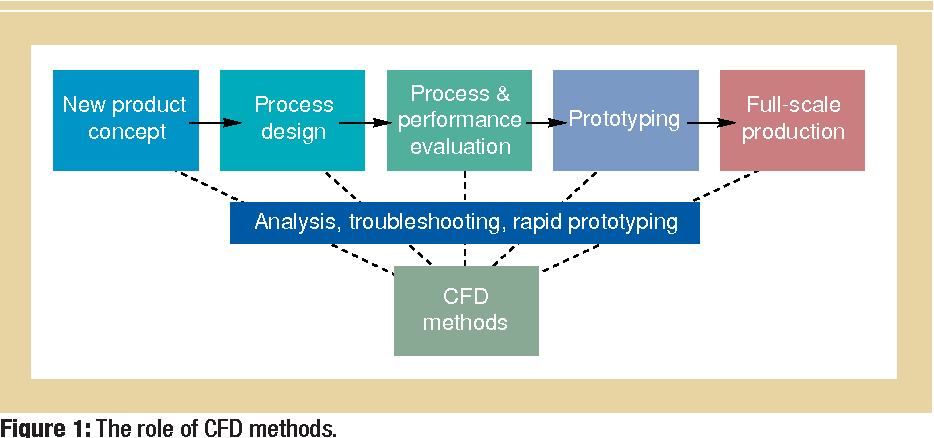Computational Fluid Dynamics (CFD) has become an essential tool in the field of mixing, allowing engineers to accurately analyze and optimize fluid flow patterns. This article explores the significant role of CFD in understanding and improving mixing processes across various industries. From designing efficient mixers to predicting fluid behavior, CFD offers invaluable insights and solutions that contribute to enhanced product quality and process control.
1. Introduction to Computational Fluid Dynamics (CFD)
Hey there! Today, I wanted to talk to you about Computational Fluid Dynamics (CFD). You might be wondering, what exactly is CFD? Well, it’s a powerful tool that helps engineers and scientists analyze and solve fluid flow problems. With CFD, we can simulate and predict how fluids (such as liquids and gases) behave in different environments and under various conditions. This technology has revolutionized many industries, including aerospace, automotive, and even the medical field. It allows us to understand complex fluid behavior, optimize designs, and make informed decisions without the need for costly and time-consuming physical experiments. So, buckle up and get ready to dive into the exciting world of CFD!
2. Understanding the Importance of Mixing in Various Industries

Mixing plays a crucial role in various industries, and it is important for us to understand its significance. As a professional working in the manufacturing sector, I have witnessed firsthand how mixing different materials can create innovative products with enhanced properties. From the automotive industry to pharmaceuticals, understanding the science of mixing is essential for achieving desired outcomes. Whether it is blending different chemicals to create a new medicine or combining various ingredients to develop flavors in the food industry, the art of mixing is a vital aspect of driving innovation and delivering high-quality products. Therefore, it is imperative for individuals in these industries to have a deep understanding of the importance of mixing and its impact on product development and customer satisfaction.
3. Applications of Computational Fluid Dynamics (CFD) in Mixing Processes
In my experience, one of the fascinating applications of Computational Fluid Dynamics (CFD) is in mixing processes. CFD has revolutionized the way we understand and optimize various mixing operations in industries such as chemical, pharmaceutical, and food processing. By simulating the fluid flow and behavior within mixing vessels, CFD allows us to predict and control variables like temperature distribution, residence time, and turbulence intensity. This level of insight has proven invaluable in not only improving the efficiency and effectiveness of mixing processes but also reducing costs and ensuring product quality. With CFD, we can now explore different mixing strategies and make informed decisions that positively impact the overall performance of our processes.
4. Advantages of Using CFD for Optimizing Mixing Efficiency
One of the major advantages of using CFD for optimizing mixing efficiency is the ability to accurately simulate the flow behavior of fluids. As a researcher in the field, I have found that CFD allows me to create virtual models of complex mixing systems and analyze the fluid dynamics without the need for physical prototypes. This not only saves time and resources but also provides a deeper understanding of the mixing process. Additionally, CFD allows for parameter optimization, enabling me to test different flow rates, geometries, and operating conditions, to find the most efficient mixing configuration. By utilizing CFD, I am able to explore a wide range of design possibilities and make informed decisions to improve mixing efficiency.
5. Challenges and Limitations of Computational Fluid Dynamics (CFD) in Mixing
One of the major challenges of using Computational Fluid Dynamics (CFD) in mixing processes is the accurate representation of turbulence. Turbulent flows are inherently complex and difficult to simulate, especially at small scales. CFD models often rely on approximations and simplifications, which can lead to inaccurate results and limited predictive capabilities. Another limitation is the computational cost associated with simulating large-scale mixing processes. CFD simulations require significant computational resources and can be time-consuming, especially for complex flows or multiphase systems. Furthermore, the accuracy of CFD predictions is highly dependent on the quality of the input data and the assumptions made during the modeling process. Any errors or uncertainties in the initial conditions or boundary conditions can introduce uncertainties into the CFD results.
6. Future Outlook: The Potential of CFD in Advancing Mixing Technologies
In my opinion, the future outlook for Computational Fluid Dynamics (CFD) in advancing mixing technologies is incredibly promising. CFD has already proven to be a powerful tool in simulating and analyzing fluid flow in various industries, including chemical engineering and pharmaceuticals. With continuous advancements in technology, CFD models are becoming more accurate and efficient, enabling engineers to optimize mixing processes and design more efficient mixing equipment. This technology has the potential to revolutionize the way we approach and optimize mixing, leading to improved product quality, reduced costs, and increased efficiency. As the demand for better mixing solutions continues to grow, I believe that CFD will play a crucial role in shaping the future of mixing technologies.
Conclusion
In conclusion, Computational Fluid Dynamics (CFD) plays a crucial role in the field of mixing. It allows engineers to accurately analyze and predict fluid behavior and mixing processes, leading to improved designs and optimized mixing performance. With the continuous advancements in CFD technology, it is expected that its role in mixing will only continue to expand in the future, revolutionizing the way we approach and achieve efficient mixing processes.
What is Computational Fluid Dynamics (CFD)?
Computational Fluid Dynamics (CFD) is a branch of fluid mechanics that involves using numerical methods and algorithms to study and analyze the behavior of fluids. It helps simulate and predict fluid flow patterns, heat transfer, and other related phenomena.
How does CFD play a role in mixing processes?
CFD plays a crucial role in mixing processes by providing insights into the behavior of fluids during mixing. It helps optimize the design and operation of mixing equipment by simulating and analyzing fluid flow patterns, velocity distributions, and concentration gradients.
What are the benefits of using CFD in mixing applications?
Using CFD in mixing applications offers several benefits. It allows for a better understanding of fluid behavior and helps optimize mixing performance. CFD simulations can help reduce costs by eliminating the need for physical prototypes and iterative experiments. It also enables the exploration of a wide range of operating conditions and design variations.
Can CFD predict mixing efficiency and uniformity?
Yes, CFD can predict mixing efficiency and uniformity by providing detailed information about fluid flow patterns and concentration distributions. Through simulations, CFD can help identify areas of poor mixing, optimize mixing design parameters, and predict mixing performance under different operating conditions.
What are the limitations of CFD in mixing analysis?
While CFD is a powerful tool for studying mixing processes, it does have some limitations. CFD simulations require accurate inputs and assumptions about fluid properties, boundary conditions, and turbulence models. The accuracy of the results is also dependent on the quality of the mesh used in the simulation. Additionally, simulating complex mixing phenomena, such as phase change or chemical reactions, can be challenging.
How can CFD be used to optimize mixing performance?
CFD can be used to optimize mixing performance by analyzing various design parameters and operating conditions. Through simulations, CFD can help identify areas of stagnant flow or poor mixing and suggest modifications to improve mixing efficiency. It allows for virtual testing and optimization of different mixing strategies, leading to improved productivity and reduced costs.

